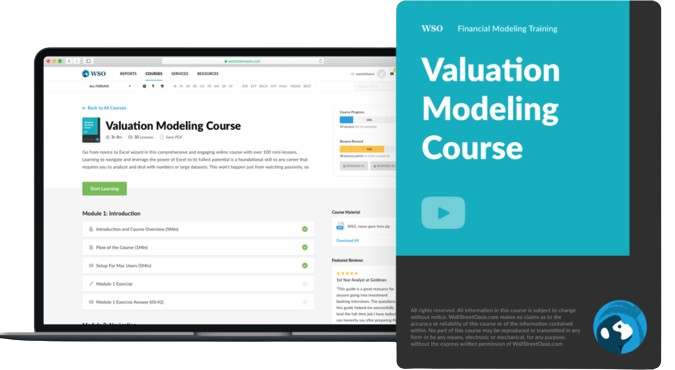Economic Profit
It is what remains of the net revenue after all the explicit and implicit costs are deducted
What is Economic Profit?
Economic Profit is what remains of the net revenue after all the Explicit and Implicit costs are deducted.

There are two variables while calculating the eco-profits:
-
Explicit costs or operating costs
-
Implicit costs or opportunity costs
When opportunity costs are deducted from the pre-tax or accounting profit, we get economic profit. Economists define it as the difference between Total Revenue (TR) and Economic Costs.
It is achieved when the Marginal Revenue Curve (MRC) is above the average total cost curve. If a firm has shown consistent economic profits, then it can be said that the firm has competitive advantages and well-defined moats.
Key Takeaways
- Economic profit represents what remains after both explicit operating costs and implicit opportunity costs are subtracted from total revenue.
- Economic profit serves as an indicator of a business's efficiency and sustainability, showing if it can cover its required rate of return and allocate resources optimally.
- The main point of difference between accounting and economic profit is that the latter considers both explicit and implicit costs, providing a more comprehensive view of a firm's profitability.
Economic Profit Formula
The formula for the economic profit can be explain as follows:
Economic Profit = Total Revenue - Total Costs
Economic Profit = Total Revenue - (Explicit Costs + Opportunity Costs)
or
Economic Profit = Total Revenue - Explicit Costs - Opportunity Costs
Economic Profit, in its essence, is what remains after opportunity cost is deducted from the accounting profit (i.e., Total Revenue - Explicit Costs). There are three components to the formula; Total Revenue, Explicit Costs, and Opportunity Cost.
Total Revenue is the net reported revenue of the firm. It is the revenue left after refunds, returns, and discounts are accounted for.
Explicit Costs are the normal business expenses that are reported on the income statement of a company.
Explicit costs are also referred to as operating costs which, after being deducted from the net revenue of a business, can give us the before-tax profit of a firm, also referred to as the accounting profit.
Explicit costs can be classified into two sub-categories:
- SG&A: Selling, General & Administrative expenses include all the company expenses that are not included in the production or delivery of goods and services.
- COGS: The cost of goods sold includes all the costs that are necessary to create the finished product that is sold by the business.
The opportunity cost is what differentiates accounting profit from eco-profit. It is the cost of a forgone benefit that would have been indulged if a different option had been chosen. A common opportunity cost is, the time that an owner invests in their business could be used in performing labor at a stable job.
Advantages of Economic Profit
There are certain limitations and benefits of every concept as it cannot reflect all aspects of the business. The eco-profit is no different.
The advantages associated with it are
1. Excellent for Calculating Business Efficiency and profitability
It is a great yardstick for measuring business efficiency. If a business can earn eco-profit, it means that it can earn sufficient levels of marginal revenue to continue its operation for a long time.
The business is also able to cover its required rate of return (RRR), which means it has an optimal capital structure set.
It is directly related to how efficiently a business can manage its operating expenses and how well it can estimate what is the right direction for the business to grow by selecting the best opportunities and keeping the opportunity cost to a minimum.
2. Serves as a good lagging indicator
A lagging indicator is something that can confirm a certain trend.
Eco-profit serves as a great lagging indicator because it can tell us if the management is making good decisions regarding the operating costs and opportunity costs.
We can look back on what opportunities the business has chosen and how they are fair alongside the rejected option. This can tell a lot about management efficiency as well.
This translates to a high Return on Equity (ROE); a high ROE tells how good the management is at allocating equity capital and adding retained earnings.
Disadvantages of Economic Profit
The disadvantages are:
1. Estimation Difficulties
A major drawback is that it is difficult to estimate. This is because eco-profits are a result of several different variables.
A variable that makes estimation difficult is the opportunity cost. Opportunity cost, as a variable, is biased and depends on the person (and their views) calculating the economic profit. Additionally, it is subjective to the business and the relevant scenario.
There are a lot of logistic and accounting difficulties that can be faced while estimating the opportunity cost. Even if some opportunity cost is forgone, it does not necessarily mean it is bad.
2. A bad measure of profitability
Unlike accounting profit, economic profit is not a reliable measure of profitability. This is due to its variability as the opportunity costs, which are part of the economic profits, are based upon assumptions rather than accounting variables which makes it unreliable.
It also glosses over and ignores a lot of important financial aspects that are actual measures of profitability.
Additionally, it depends a lot upon interest rates and the company's risk profile; if the rates go up, the cost of capital will go up.
Similarly, if the company's credit rating drops may be due to external or internal factors. Even if the margins are not affected, the cost of equity will go up, resulting in a higher cost of capital.
If the cost of capital goes up, the company needs to generate a high return on its capital to generate eco-profits.
3. Time-consuming and impractical
Calculating economic profit, which includes explicit and implicit costs, introduces a high degree of complexity.
There exists a wide range of implicit costs for every firm. Every owner and every worker has their own opportunity cost. Trying to quantify and standardize this is extremely time-consuming.
Furthermore, attempting to quantify this for more than thousands of firms in a country is highly impractical.
Economic Profit Vs. Accounting Profit
Accounting profit is a measure of the accounting profitability of any company.
It is calculated by deducting explicit costs from the total revenue of a firm; explicit costs are normal operating expenses that are reported in a company's income statement.
One advantage of accounting profits is that it is very straightforward and easy to calculate. It is pre-calculated and audited by an independent auditor on the company's income statement. This makes it very reliable.
As accounting profit is the Revenue - Operating cost, it essentially is the pre-tax profit of a company.
Another advantage of accounting profit is that it can be compared with other companies with different tax regimes. As account profit ignores the tax effect, it makes the profits more comparable.
A drawback of accounting profit is that it makes no considerations for opportunities forgone.
Economic profit adds one variable to the accounting profit equation, which is the implicit costs.
These are costs that a business has forgone by taking up another available opportunity as it is more of a theoretical calculation by considering opportunities foregone.
For a business to be able to sustain itself in the long term, it is just not enough that it should cover its operating costs.
It should also be able to cover the required rate of return and deliver an ROE above its minimum cost of capital.
If a business is earning an economic profit, it shows that the business is sustainable in the long run and the marginal revenue (MR) is more than the average total cost (ATC), above its economic break-even point (BEP).
A drawback of eco-profits is that they are difficult to estimate as they are based on assumptions rather than data. External factors like interest rates and the risk profile of the company can have a considerable effect on the eco profits.
| Economic Profit | Accounting Profit | |
|---|---|---|
| Formula | Total Revenue - Total Costs | Total Revenue - Explicit costs |
| Total cost | Includes explicit and implicit costs (opportunity cost) | Includes only explicit cost |
| Profit considerations | Represents profit after both explicit and opportunity costs, and accounting for the cost of capital | It is a pre-tax profit |
| MR and ATC considerations | There is a relationship between them. If MR > ATC, then there is a positive economic profit (and vice versa). | There is no consideration for the relationship between MR and ATC. |
| Subjectivity | It is subjective based on opportunity costs. | It is not subjective as it is based on actual data. |
Understanding Economic Profits in Business
Economic profit occurs when a business can cover its explicit or operating costs along with the opportunity cost foregone.
There are several factors that are instrumental in generating it. Some of them include huge tailwinds, competitive advantages, and a strong operational framework or even cheap credit, which drives down the total cost of capital.
It is an indication of a good profitable business that is sustainable in the long run as it is able to cover all of its fixed and variable costs along with any opportunity costs. As the firm is operating well above its shutdown point, and break-even point (BEP)
If a firm can just cover its average variable costs (AVC), then the firm is said to operate just above its shutdown point and should not continue operations.
At the same time, if a firm can cover its average total cost (ATC), it means that it is earning eco-profits where the Return on Equity (ROE) is higher than the Required Rate of Return (RRR).
Eco-Profits are categorized into two types:
-
Normal Eco-Profits
-
Abnormal Eco-Profits
Normal Economic Profit
Also known as normal profit, it is when a firm can cover its explicit and opportunity costs but cannot earn over and above those costs.
In this scenario, a firm can only cover its required rate of return.
ROE = RRR
This scenario is also referred to as a zero economic profit where the firm can cover its operating expenses and required rate of return, which is its fixed total cost but is not able to produce a return in excess of its required return.
This also shows that the Marginal Revenue (MR) = Average Total Costs (ATC)
When a firm is operating at its Economic Break-Even Point (BEP), it still is sustainable in the long run; it just does not have any significant competitive advantages.
Abnormal Economic Profit
In this scenario, a firm will be earning an ROE way above its RRR.
For an abnormal profit scenario, all other factors are the same as the normal profit, but the Marginal Cost Curve is much higher than the ATC curve.
This suggests that the firm has high competitive advantages or moats, which allows the firm to achieve such high returns. This states that the firm can operate with good profitability in the long run
High ROEs attract competition as the industry itself is profitable, which allows other players to also enter the market. This eventually will make the eco-profit zero as more competition comes into the market, creating substitutes and diluting the market share.
Free Resources
To continue learning and advancing your career, check out these additional helpful WSO resources:




or Want to Sign up with your social account?